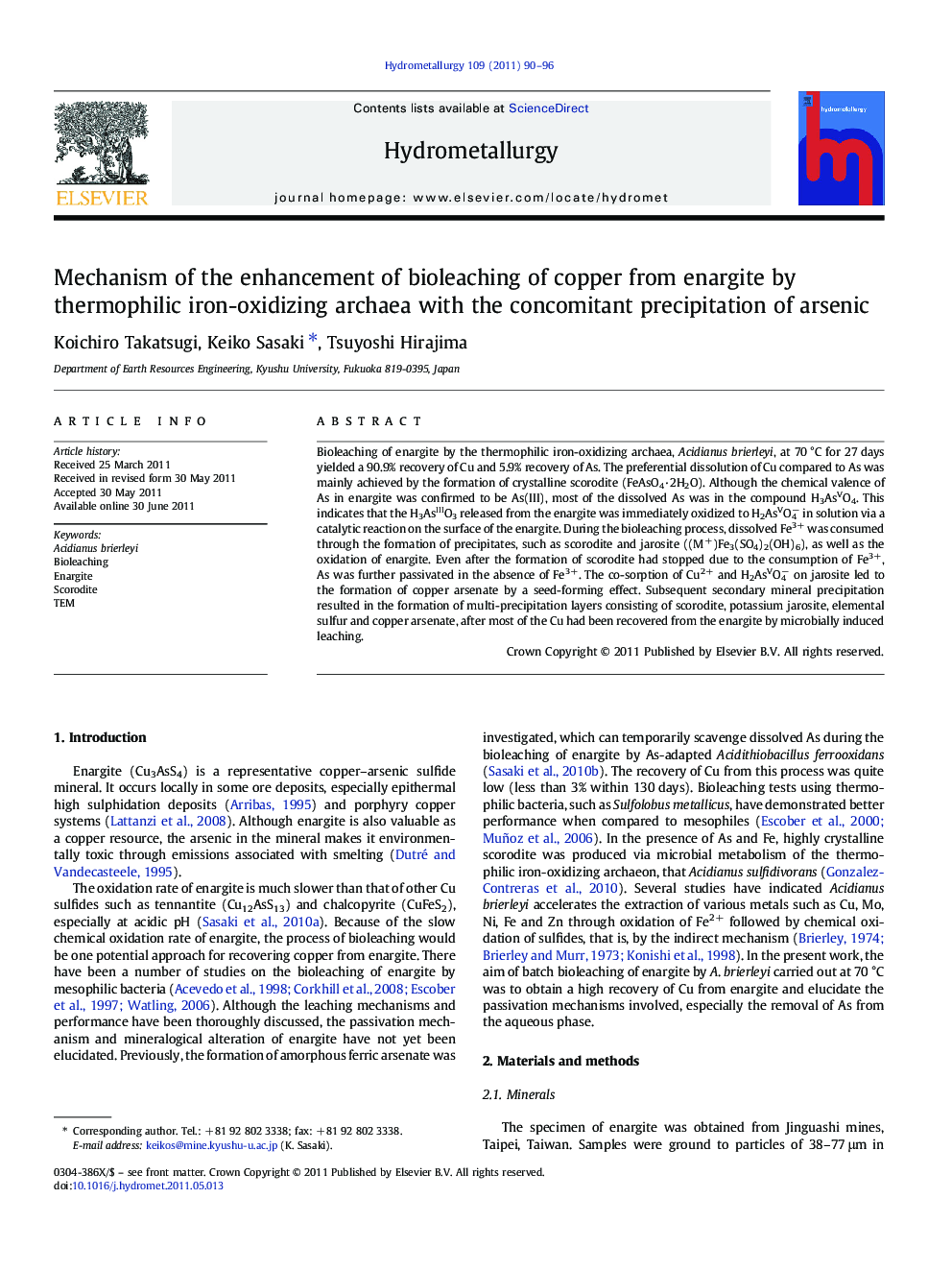| Article ID | Journal | Published Year | Pages | File Type |
|---|---|---|---|---|
| 212645 | Hydrometallurgy | 2011 | 7 Pages |
Bioleaching of enargite by the thermophilic iron-oxidizing archaea, Acidianus brierleyi, at 70 °C for 27 days yielded a 90.9% recovery of Cu and 5.9% recovery of As. The preferential dissolution of Cu compared to As was mainly achieved by the formation of crystalline scorodite (FeAsO4·2H2O). Although the chemical valence of As in enargite was confirmed to be As(III), most of the dissolved As was in the compound H3AsVO4. This indicates that the H3AsIIIO3 released from the enargite was immediately oxidized to H2AsVO4− in solution via a catalytic reaction on the surface of the enargite. During the bioleaching process, dissolved Fe3+ was consumed through the formation of precipitates, such as scorodite and jarosite ((M+)Fe3(SO4)2(OH)6), as well as the oxidation of enargite. Even after the formation of scorodite had stopped due to the consumption of Fe3+, As was further passivated in the absence of Fe3+. The co-sorption of Cu2+ and H2AsVO4− on jarosite led to the formation of copper arsenate by a seed-forming effect. Subsequent secondary mineral precipitation resulted in the formation of multi-precipitation layers consisting of scorodite, potassium jarosite, elemental sulfur and copper arsenate, after most of the Cu had been recovered from the enargite by microbially induced leaching.
► We model oxidation of arsenite by Fe3+ in bioleaching of enargite with A. brierleyi. ► It is followed by immobilization of As in (co-)precipitation. ► Dense EPS scavenged cations facilitating secondary minerals formed on enargite. ► 91% recovery of Cu and 6% recovery of As were yielded in the bioleaching.
